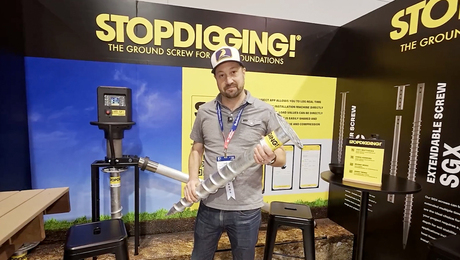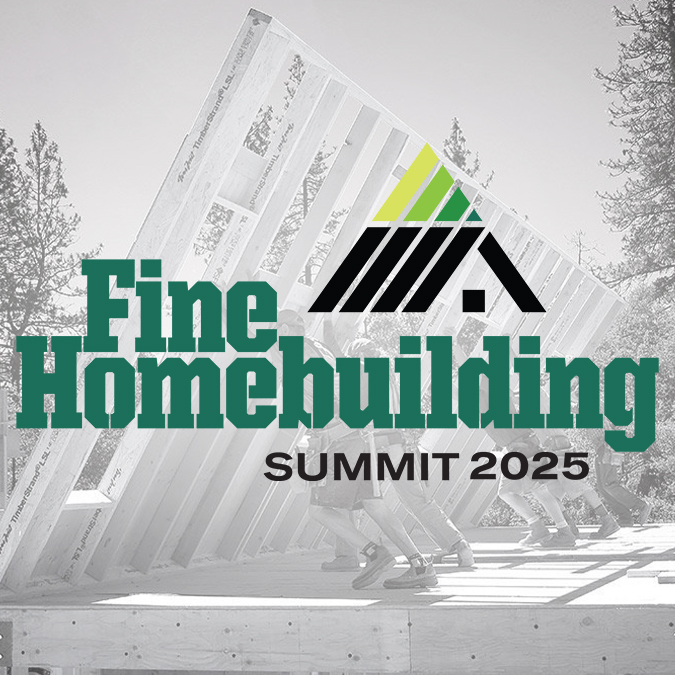This is sort of a follow-up/addendum to an earlier question to all the well-versed elec. pros here…
I’m having a bit of a dispute w/ my building dept. about a particular of the NEC. I’m building a ‘guest house/office’ (separate structure from the main house) which has its own service.. In other words, a separate service drop and meter. The meter is part of a meter/main service combo installed on a pedestal 50 feet from the building. It’s a 200A service. The service equip is basically mobile home equip. w/ a main disconnect and an over-current device (main breaker) AT the pedestal/meter base. There, it has its own grounding rods installed, and the service neutral and grounding bus-bars are BONDED at the case–as per code. From there, I have an underground conduit (Sch.40 pvc, 2.5″) connecting the building to be supplied, which terminates at a distribution panel inside the structure (conduit penetrates the foundation at the crawl space and continues up into the panel in the house.) So I’m essentially running a feeder to the building…Copper…2/0 for the conductors, 1/0 for the neutral.
It is not a mobile home. It’s a permanent structure on a block foundation. The Code in sec. 250.32 specifies that for a feeder of this type, the cable must be a 4-wire (W/ ground) OR a 3-wire, w/ the building supplying it’s own grounding system.
I’ve asked the dept. why I MUST use a 4-wire feeder (w/ a grounding wire run w/ the 3 supply conductors) to connect the building, as they’ve told me, when the code seems to clearly state that is not the only option. No one seems to be able to show me where the code specifies otherwise.
Anyone know why, specifically, I need to pull a 4-wire (mobile-home feeder) to a permanent structure, vs. a 3-wire w/ a separate grounding system at the new building? Do I have a legitimate argument here? (the 4th wire—#1 copper—is costing me about $100 extra. I’d rather not run it if I don’t need it).
Edited 4/22/2008 10:49 pm ET by pinko



















Replies
It's not worth trying to "win" this one for $100. Even if you did, you'll likely pay for it in other ways.
Pete
Edited 4/22/2008 11:31 pm ET by PeteBradley
Sooo...Do you mean I'm right about the Code here?
IS there any metallic path like a phone line, CATV, or metal piping, other than the feeder, between the pedestal and the building? If so--you must run the equipment grounding conductor.
This per the 2005 NEC.
I believe the 2008 NEC requires an EGC, the thinking being that a parallel metallic path might be created in the future.
Check to see what NEC version is the basis for the local Code, and also see if the AHJ has adopted any amendments to the NEC.
Cliff
Cliff, I also read that portion of the (2005) Code, and no, there is no metallic connection between the building and the pedestal, or between the building and anything else for that matter.Does the 2008 NEC specifically require the 4th wire? I have the 2005 and I believe the 2005 is the standard here right now. But, I could be wrong about that.
Pinko I am not an electrician but my first thought is that the city, is taking your panel in the structure to be a sub panel in which case the ground and neutrals are isolated; thus four wires are needed not three and no grounding rods either. The remote is not just a meter but a meter and disconnect and it gets the grounding rod.
http://www.groverelectric.com/pdfs/35_How_To_Install_200amp_100amp_SubFeed.pdf
more info http://www.groverelectric.com/how_to_do_it.htm
links are from my favorite Plumbing/Electrical supply house in the world Grovers.
I appreciate your info Wally but, I know the sub-panel requirements for a separate (isolated) ground to be pulled. It's just that this is the main service for the structure---not a sub-feed. And it's not a mobile home, therefore, what's the reason I need to run a 4th wire?
My point is in there view it is not the main service, they are considering that the panel 50 feet away is the main service, it has the main breaker, it has the grounding rods the other panel at the building is a sub panel and needs to be wired as such.I am having a four plex service put in now, the meter base has; mast, 4 meters, four 100 amp breakers it gets, two grounding rods, one tie in with in x feet of the water line as it enters the building. Each other panel is a sub panel and wired as such, four wires to each no grounding rod. I am not doing it a licensed electrician is, that is how he has it.I do not know if you are a licensed electrician or not, but if i was not a licensed electrician (which I am), I would just do as the inspectors asks. Even licensed electricians don't argue with the inspector over something like this, If you want to argue it go ahead, but it may cost you more in the the long run because an upset inspector will go over everything else with much more scrutiny, He will measure every hole and tell you you need nail plates, because the holes are too short from the face of the stud, but not tell you which stud needs them. 100 $ is cheap insurance to keep him on your good side. Just my opinion.Wallyo
Edited 4/23/2008 9:31 am ET by wallyo
And I agree w/ you, Wally.But my inspector is sort of laid-back country-type folk who is open to 'suggestions'...Admittedly, he's not sure why he wants me to run a 4-wire feeder. I may be able to explain to him why he doesn't. IF the code permits. Btw, he also mentioned he'd like to see a SECOND disconnect on the house at the entry point...something about a "30 foot rule".. Never heard of it. Electricians I talked to never heard of it. The main disconnect is at the meter, in front, and within plain sight of the house; 50 feet away. Anyone here heard of this 'rule'?
We always run a separate bare #4 in those cases, not a 4 wire cable. In fact, I have never seen that done around our job sites.
Every underground service in our community is run like this. They require all underground wiring to be protected by a breaker at the pole or service box.
Well I'm not really talking about a "4-wire cable", as in USE or something like that, but 4 individual THHN wires. The 4th wire was sized to be a #1 for the GEC for my 200A feeder---IF I actually needed it. The feeder conductors will be protected by a breaker on the meter combo, as I mentioned before.In any event, no way could I pull a solid bare wire that size through my conduit!
I'm not talking about pulling a bare #4 wire in the conduit. When we do it, we run the bare #4 outside of the conduit if we even use conduit. Most of the time we use USE cable...three strands.
Why do you need a #1 cable for a grounding conductor on a 200 amp service?
If I understand this correctly, the building is a subpanel from the main overcurrent protection at the service. This opens the old discussion of subpanels having their own ground versus running a bond conductor back to the main panel. It's been discussed here many times; the search function may help you.
Around here it is almost always ruled that the ground protection be only at the main. Livestock barns (which I don't think your building qualifies as) are just about the only exception.
Scott.
Always remember those first immortal words that Adam said to Eve, “You’d better stand back, I don’t know how big this thing’s going to get.â€
Actually, Scott, the inspector told me I ought to ALSO put a grounding system (rods) on the house panel and bond the ground bus--and the GEC--to it as well.. "Can't never have too many grounds" were his actual words, IIR.See what I'm dealing with here?
Code does require a grounding electrode on any separate structure--to serve as a lightning or other high-energy event (like cross 'tween primary line and secondary line) drain.
I don't have a copy of the 2008, I'll check on-line tonight. But I believe the 2008 does req. 4-wire feeder.
Cliff
The only reason I see for the second disconnect breaker at the structure is safety, If I remember it can be done either way. But without has to do something with distance and line of sight. I think it is a good idea to have one at the sub panel, you know the drill, You are working on the sub panel, have the main off 50' away some one sees it is off and flips it on without finding out why it is off.Now I understand you bewilderment, as I see it it is one way or the other not both: 4 wire no rod, 3 wire and rod.Just curious why did you put the panel 50 feet away and not just set the meter base at the structure, with a main panel directly on the other side? R V pad or something?Wallyo
Edited 4/23/2008 11:47 am ET by wallyo
Quick answer: the meter pedestal is exactly 250' from the transformer pole...the max distance I could get w/ out paying for a new pole...And the building is exactly 300' from said pole. I had to make up the difference of 50' w/ a feeder.
I think you have a good arguement, however, I like running a ground anyways. #1 cu sounds to large to me for an equipment ground. I thought #6 cu was good for 200 amps on a feeder.
To answer both questions, I have no idea why I needed a #1 wire as the ground. The only reason I can come up w/ is because on a 200A mobile home 4-wire feeder, the cables are 4/0, 4/0, 2/0, 1/0 (AL). Same pattern for my copper, I suppose. Bottom line is, inspector told me he wanted to see the 4-wire feeder, and the 'master electrician' at my elec. supply house said it had to be a #1 (I argued for a #2, but was talked out of it). Incidentally, he also argued for the 4-wire, although he couldn't explain why either.I've bought the wire ($750 worth), I'll be pulling it today, so I s'pose it's a non-issue now.But I still haven't discovered why, per Code, I needed the 4-wire. I guess it'll just be another one of those perpetual mysteries in life.
I have bee reading all these messages, and they are very interesting and very educational. I saw the two web-sites posted about electrical calculations.If I may, I vould like to ask you( assuming I understood correctly): The guest house you are building has a separate service drop and meter. It is installed on a pedestal 50 feet away and you built an underground conduit sch.40 to connect to the house. Why the service drop does not come directly from the pole to the house instead of having a pedestal 50 feet away? This way you would treat the whole set-up as an individual separate house?
Gabriel,Re-read posts #15 and #16 for the answer to your question about the 50 foot separation of the meter from the house.Bill